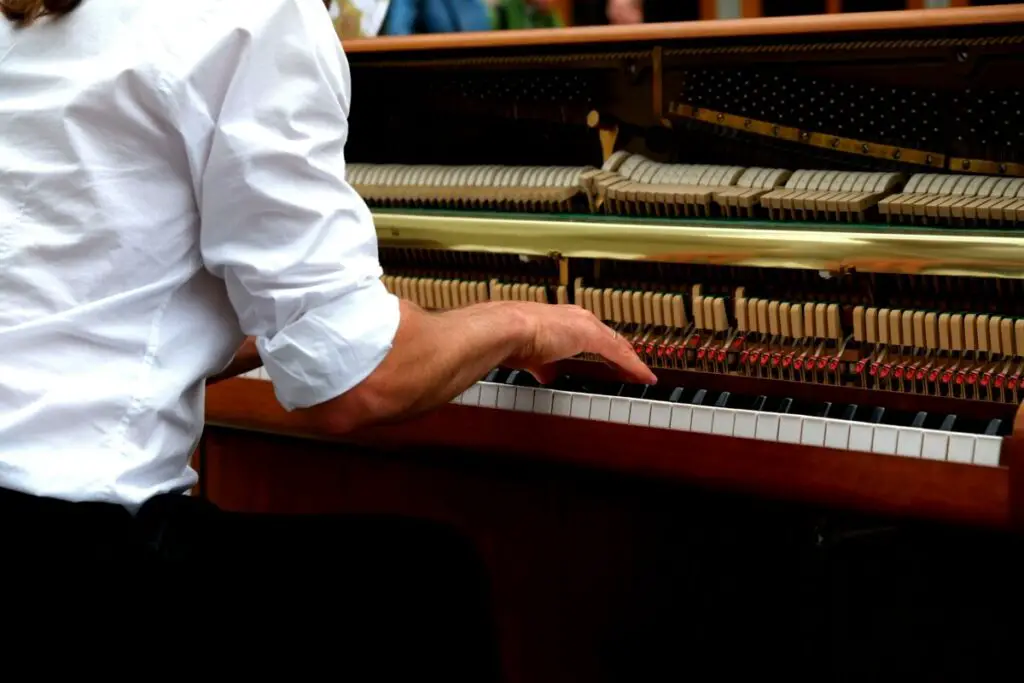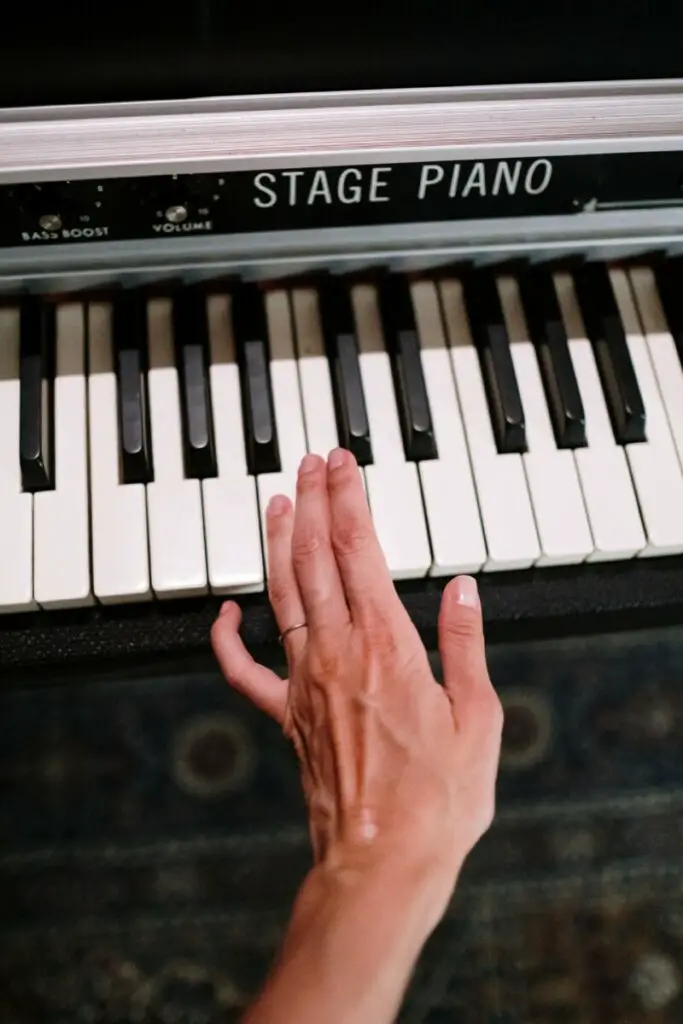This post contains affiliate links.

If you ever watch piano competitions like the prestigious International Chopin Piano Competition, you may notice that most of the pianists tend to be on the slimmer side, or even skinny. Why is this? Are there any advantages to being skinny when it comes to playing the piano, or is this because of something else entirely?
As a general rule, being skinny provides pianists with greater control over their fingers’ movements, making them more dexterous and more effective when playing the piano. This is because skinny people tend to have skinnier and longer fingers.
In this article, we will go through a few more reasons why pianists are skinny while giving examples of some pianists who are on the heavier side. Along with related questions like if playing the piano can make your fingers skinnier, or can people with smaller hands play the piano?
Why are pianists skinny?
There are 4 reasons that could explain why pianists are skinny:
More advantageous when it comes to playing the piano
As mentioned above, skinnier people have skinnier arms and fingers, allowing them to move them faster and play easier compared to people with average weights or more. People with larger fingers may find it harder to fit their fingers between the black notes on the keyboard, making it more difficult to play more complex chords.
Playing the piano is hard work
When thinking of activities that burn calories, we usually think of exercising or doing labour-intensive works like lifting heavy boxes.
Turns out just the simple act of thinking can burn calories too! Did you know that on average, on a typical day, the brain burns roughly 300 calories? The brains will burn more calories with more intensive thinking like studying for a test or listening and writing notes during lectures.
Likewise, piano playing is very intensive work too. Having to think and identify the notes on the music sheets, think and try to find the most optimal and comfortable hand placements for the notes, the act of repeating playing the same section to commit them to memory, the frustrations you get when you accidentally hit the wrong key and have to restart the whole piece, or the mental stress and nervousness right before playing before an audience, etc.
No doubt all of these are going to burn a lot of calories. Not to mention, professional pianists practice at least 3-4 hours per day and up to 8 hours per day in the days leading up to the performance. That’s a lot of hard work and calories burned!
Forgot to eat food
You would be surprised about this, but turns out when someone is lost within the notes and measures of a piece, they may forget to intake food once in a while. Some pianists forget to eat lunch while being too focused to practice the piano and go straight to dinner at night.
This makes sense since a lot of pianists practise up to 8 hours per day, and it’s safe to assume that music is the food that fills their bellies and souls.
Marketing purposes
It’s safe to assume that skinny people are “easier on the eyes” compared to fatter people, thus making them more marketable to companies. This has been the norm to the fashion industry for decades now, and it seems to hold true for the music world too.
Skinny pianists may be deemed more marketable by major labels, and thus are featured in magazines and advertised more heavily.
With the fashion industry now moving towards being more inclusive of people on the heavier sides, hopefully, the same will be true for the major record labels in the music world too.

Famous pianists that are on the heavier side
While some professional pianists are skinny, the same doesn’t hold true for the rest of the piano world, with some people being skinny, some being average weight or fat. This shows that anyone can play the piano.
You may think fat pianists have trouble playing because the size of their arms hinders movements on the piano. However, this can be fixed by simply sitting further away from the piano.
There are examples of great piano players on the heavier side, like Fat Domino, an American pianist and songwriter, who is often regarded as a pioneer in popularizing early rock and roll with songs like “Blueberry Hill” and “Ain’t that a Shame”.
Or Fat Waller, an American jazz pianist and composer, known for his innovations in the Harlem stride style which laid the foundation for modern jazz piano.
As we can see, these men are definitely on the chubbier side of the scale, however, that doesn’t stop them from being great pianists, and influential figures in their respective genres.
They demonstrate excellent control over the keyboard, making hitting complex chords and alternating hands to different sections on the piano looks easy as pie. On top of that, these guys are singing and making eye contact with the audience at the same time!
If you play piano, you know how hard it is to just play a piece without looking at the keyboard, it requires a lot of practice to memorize the positions of the notes and chords. These guys make it looks like just another Tuesday for them.
Can playing the piano make your fingers skinnier?
Similar to the myth that playing basketball will make you taller, you may also wonder if your fingers will get skinnier after playing the piano.
Sadly, no. Playing the piano will develop the muscles in your hands, wrists and forearms, making your fingers more dexterous, but the underlying bones within will remain the same and won’t be lengthened.
Furthermore, the muscles won’t develop significantly enough to create any noticeable differences between pianists’ hands and normal hands.
How long and skinny your fingers are depends on your genetics. Males tend to have larger hands than females, taller people tend to have longer fingers compared to short people.
Can people with short fingers play the piano?
As a general rule, anyone can play the piano as long as their fingers can reach an octave – a key of a specific note to the next key of the same note but higher pitch. A quick tip: if your fingers are short, try pulling them down a bit on the keys in order to hit an octave.
However, what piece you are playing also matters. Piano pieces that have large stretches are easier for people with longer fingers, while pieces that require you to move to different sections on the piano are easier for people with shorter fingers since long fingers will trip over each other while moving.
There are techniques that help people with short fingers to play chords that require stretching fingers, like rolling the chords, where the notes are played quickly in order, as opposed to simultaneously.

